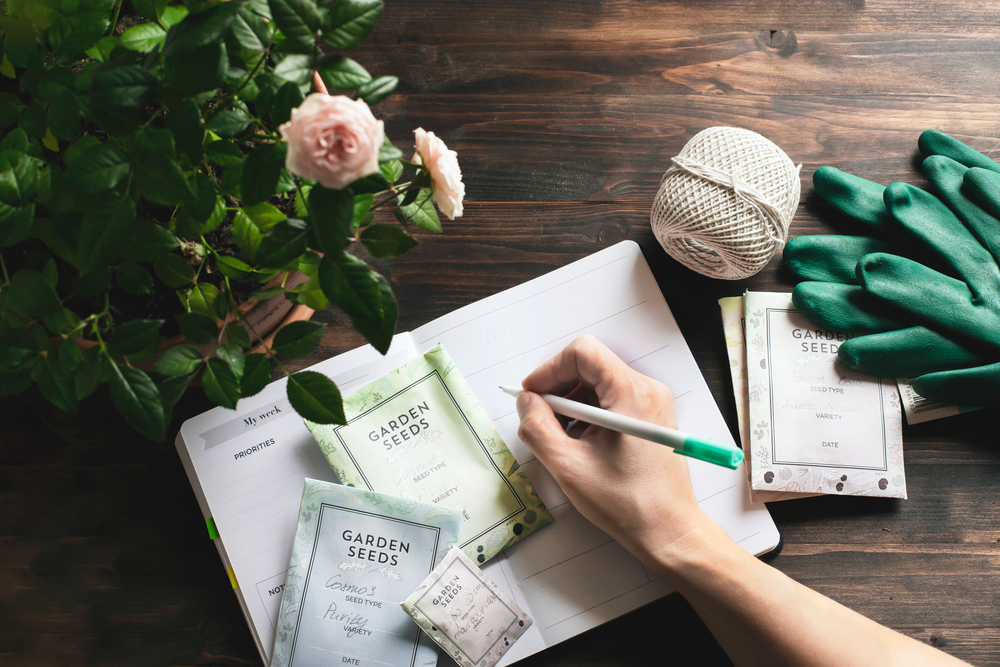Planning ahead is important when growing a garden because it helps you make the most of the space you have, ensures that you have the right plants in the right place at the right time, and can help you avoid potential problems down the line such as pests, disease and soil fertility issues. Having a good plan ahead of time will allow you to make the most of your resources and environment while reducing the chances of crop failures and disapointment. It ensures a more bountiful and successful gardening experience.
In this article we will provide you with all the information you need about planning ahead. This is the Ultimate Guide about Planning Ahead.
- General information
- Benefits of planning
- Planning the right way
2. Benefits of planning
There are several benefits to planning ahead for your garden. Here are a few:
Increased efficiency:
By planning ahead, you’ll know exactly what you need to do in your garden each day, week, or month, which will help you work more efficiently. This can save you time and energy in the long run.
Better use of space:
When you plan ahead, you can make sure that you’re using your gardening space in the most efficient way possible. For example, you can plan to rotate your crops to ensure that you’re not repeatedly planting the same crops in the same location, which can lead to soil depletion.
Improved crop yields:
By planning ahead, you can make sure that you’re planting at the right time for your area, which can help increase the yield of your crops. For example, if you know that the frost-free date for your area is May 15th, you can plan to start planting your warm-season crops on that date.
Better overall garden health:
Planning ahead allows you to be proactive about addressing potential issues that may arise in your garden, such as pests or diseases. This can help keep your plants healthy, which in turn can help increase your crop yields.
Better utilization of resources:
When planning ahead, you can manage your garden in a way that utilizes resources in a sustainable way. That includes managing water usage and pest control in an ecofriendly manner, and planning crop rotation to keep soil nutrient rich.
Overall, planning ahead can help you get the most out of your gardening efforts and can make the experience of gardening more enjoyable.
3. Planning the right way
There are several steps you can take to properly plan ahead for your garden:
Assess your space:
Before you start planning, take a look at the area where you will be gardening. Consider factors such as sunlight, shade, soil quality, and drainage. Make note of any existing features, such as trees, walls, or pathways, that may affect your gardening plans.
Create a layout:
Use a piece of graph paper or a landscape design software to create a layout of your garden. This will help you visualize how your garden will look once it is planted and will give you a sense of the space you have to work with. It can also help you to decide the placement of pathways, seating areas and any other feature you want to include.
Make a list of plants:
Make a list of the plants that you want to include in your garden. Consider factors such as mature size, light requirements, water needs, and hardiness zone. Take into account the seasonal variations of your area to choose plants that will thrive in your garden all year round.
Crop rotation:
Plan which plants will go in each bed and do so in rotation. This helps in maintaining the fertility of the soil, reducing the risk of pests and diseases, and maintaining the diversity of crops in the garden.
Timing is important:
Take note of the optimal planting time for each plant you have chosen. Some plants like to be planted in spring while others in fall. Plan ahead so that you are ready to plant each crop at the best time for your area.
Consider maintenance:
Consider how much maintenance each plant will need. Some plants, such as annuals, need to be replanted every year, while others, such as perennials, will come back year after year. Keep this in mind as you plan your garden so that you can budget your time and energy accordingly.
Adapt and reassess:
As you continue to grow your garden, reassess it and make changes as needed. If a particular plant isn’t doing well, consider replacing it with something that will thrive in that spot. If a bed isn’t producing as much as you’d like, think about how you can improve it. Continuously reassess, adapt and make changes will help in keeping the garden healthy and productive.





